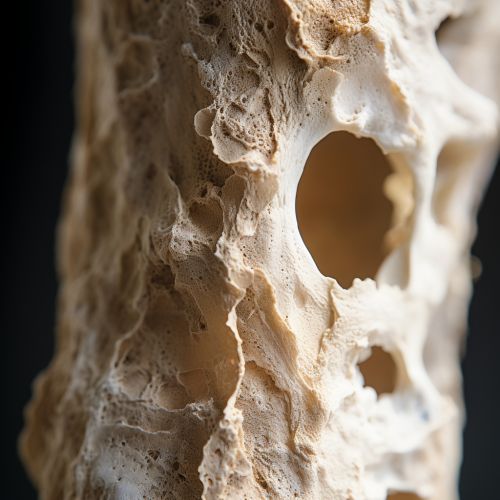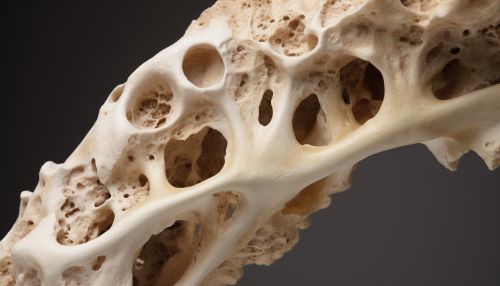Osteomalacia
Overview
Osteomalacia refers to a group of disorders that impair the mineralization of bone matrix, often caused by a deficiency of vitamin D or problems with its metabolism. It is characterized by the softening of the bones, which can lead to bone pain, muscle weakness, and fractures. The condition is more common in adults, particularly in regions with limited sunlight exposure or in individuals with limited dietary intake of vitamin D.
Causes
The primary cause of osteomalacia is a deficiency of vitamin D, which is essential for the absorption of calcium and phosphorus in the intestine. This deficiency can result from inadequate dietary intake, lack of sunlight exposure, or disorders that impair vitamin D absorption or conversion into its active form. Certain medications, such as anticonvulsants and antiretrovirals, can also interfere with vitamin D metabolism and lead to osteomalacia.


Other causes of osteomalacia include deficiencies in calcium or phosphorus, either due to inadequate dietary intake or disorders that impair their absorption or metabolism. For example, renal osteodystrophy, a condition associated with chronic kidney disease, can lead to osteomalacia due to impaired phosphorus excretion and vitamin D synthesis.
Symptoms
The symptoms of osteomalacia often develop gradually and can be subtle in the early stages of the disease. They may include bone pain, particularly in the lower back, hips, and legs, muscle weakness, and difficulty walking. As the disease progresses, individuals may experience more severe pain, fractures, and deformities such as bowing of the legs or kyphosis (a forward rounding of the back).
Diagnosis
The diagnosis of osteomalacia typically involves a combination of clinical history, physical examination, laboratory tests, and imaging studies. Blood tests may reveal low levels of calcium or phosphorus, elevated levels of alkaline phosphatase (a marker of bone turnover), and low levels of 25-hydroxyvitamin D. Imaging studies, such as X-rays or bone scans, may show characteristic changes in the bones, such as pseudofractures or Looser's zones, which are areas of incomplete fracture healing.
In some cases, a bone biopsy may be performed to confirm the diagnosis. This involves the removal of a small sample of bone tissue for microscopic examination, which can reveal the characteristic features of osteomalacia, such as an excess of unmineralized bone matrix (osteoid).
Treatment
The treatment of osteomalacia depends on the underlying cause. In cases caused by vitamin D deficiency, treatment typically involves supplementation with vitamin D and calcium. This can be achieved through diet, oral supplements, or in severe cases, intravenous administration. In addition, lifestyle modifications such as increased sunlight exposure and regular weight-bearing exercise can help improve bone health.
In cases of osteomalacia caused by disorders of calcium or phosphorus metabolism, treatment may involve addressing the underlying disorder, such as managing chronic kidney disease or discontinuing medications that interfere with vitamin D metabolism. In some cases, surgery may be required to correct bone deformities or fractures.
Prevention
Prevention of osteomalacia involves ensuring adequate intake of vitamin D, calcium, and phosphorus, either through diet or supplementation. Regular sunlight exposure and weight-bearing exercise can also help maintain bone health. Individuals at risk of osteomalacia, such as older adults, people with limited sunlight exposure, or those with disorders that impair vitamin D or mineral metabolism, may benefit from regular screening and early intervention.
